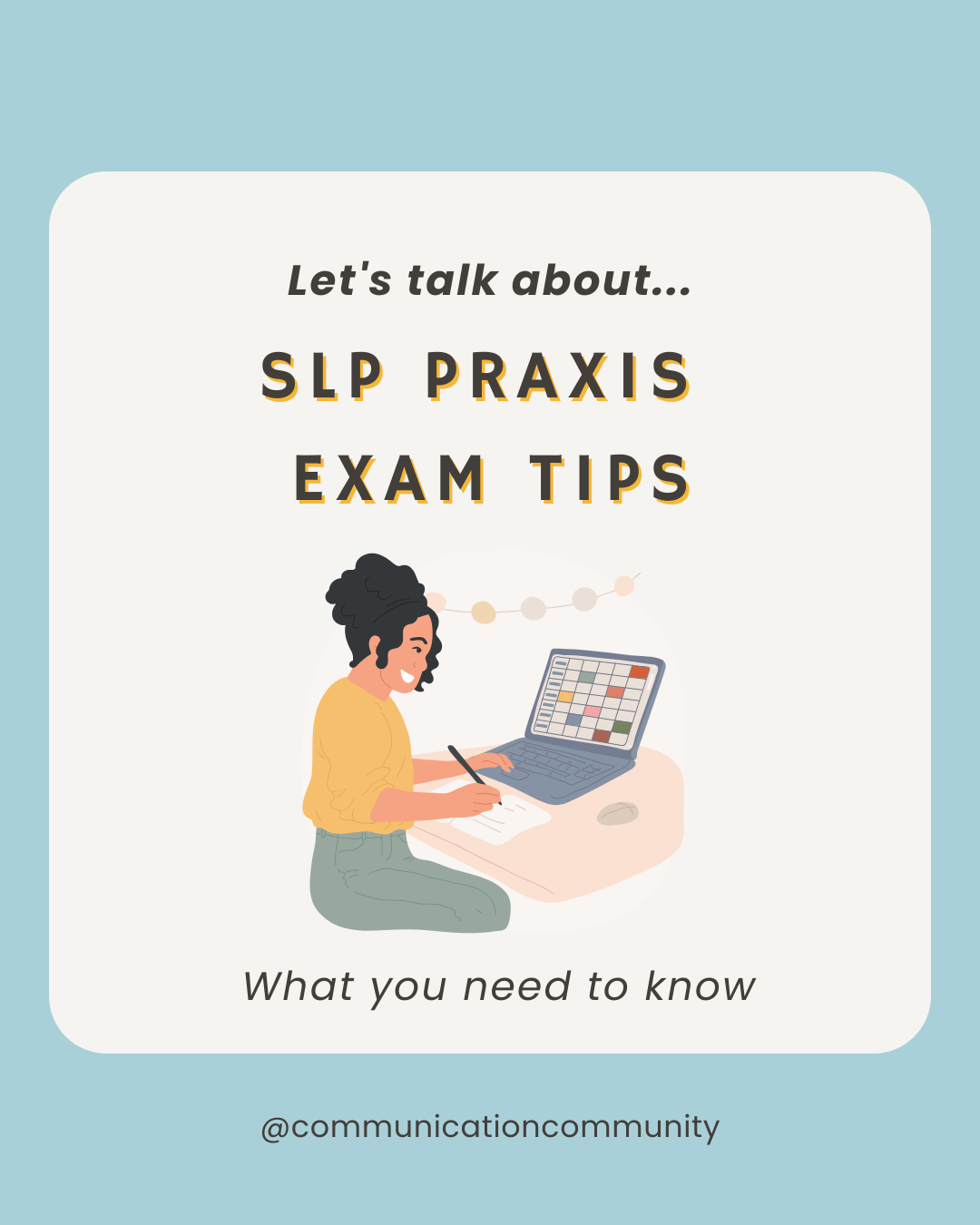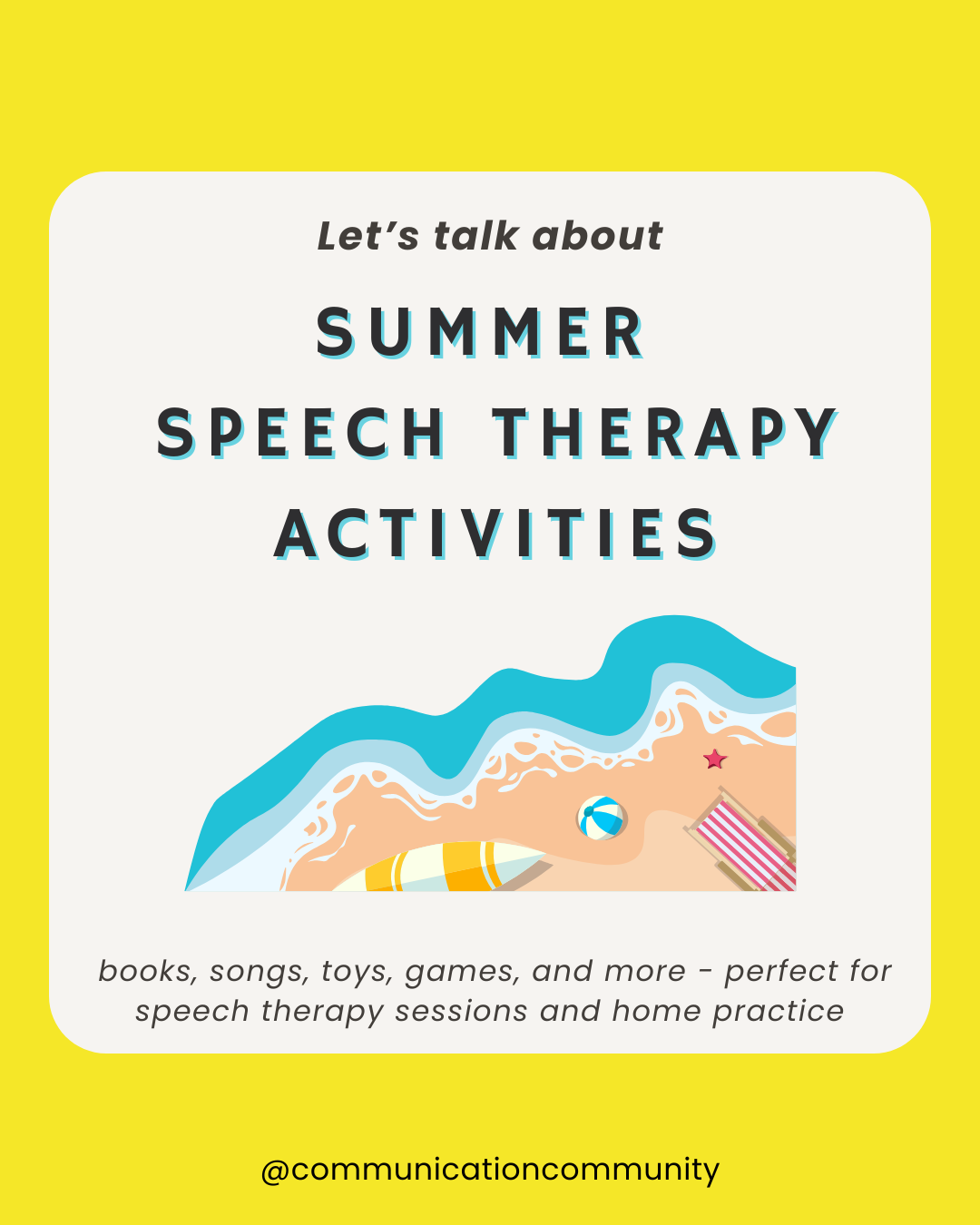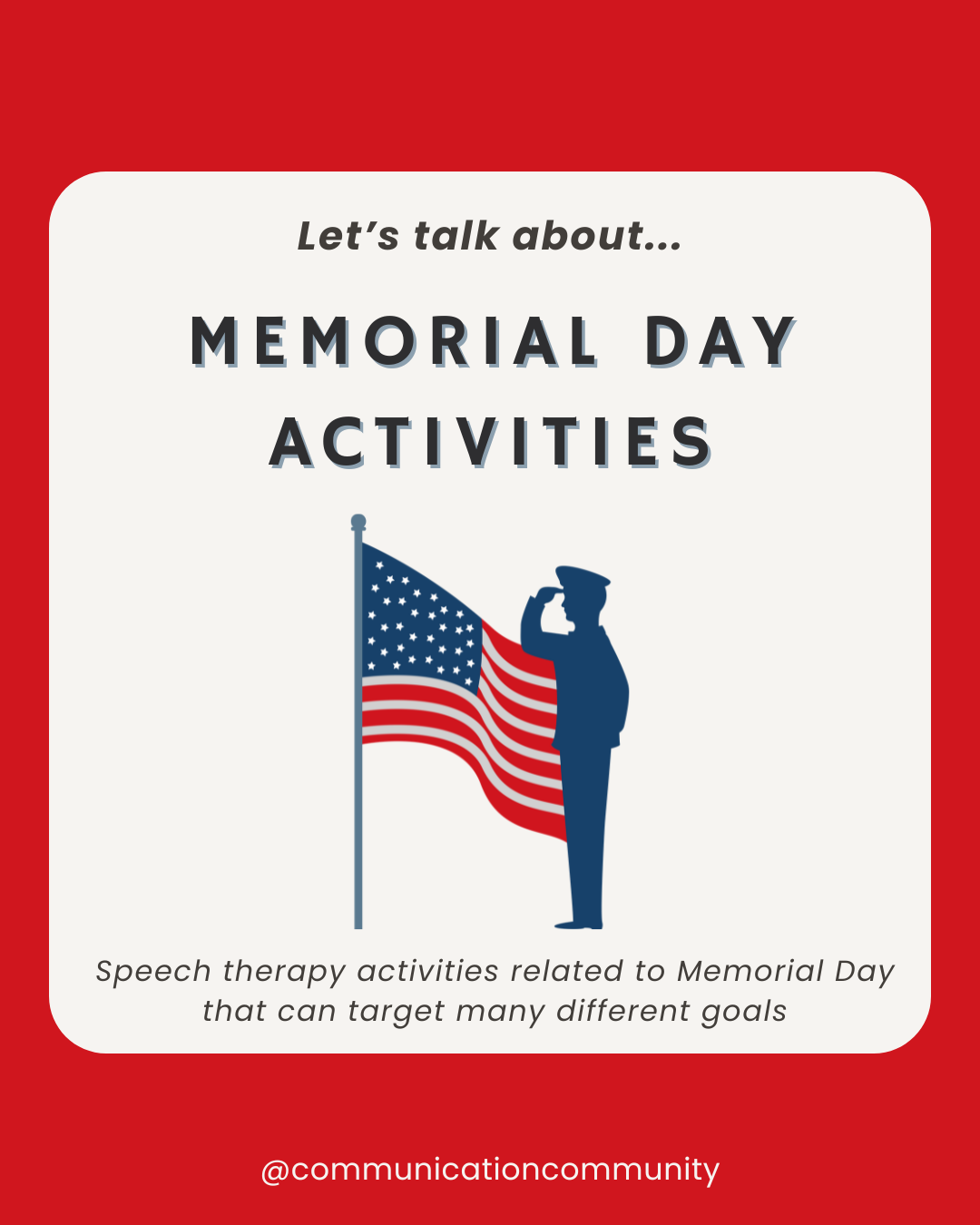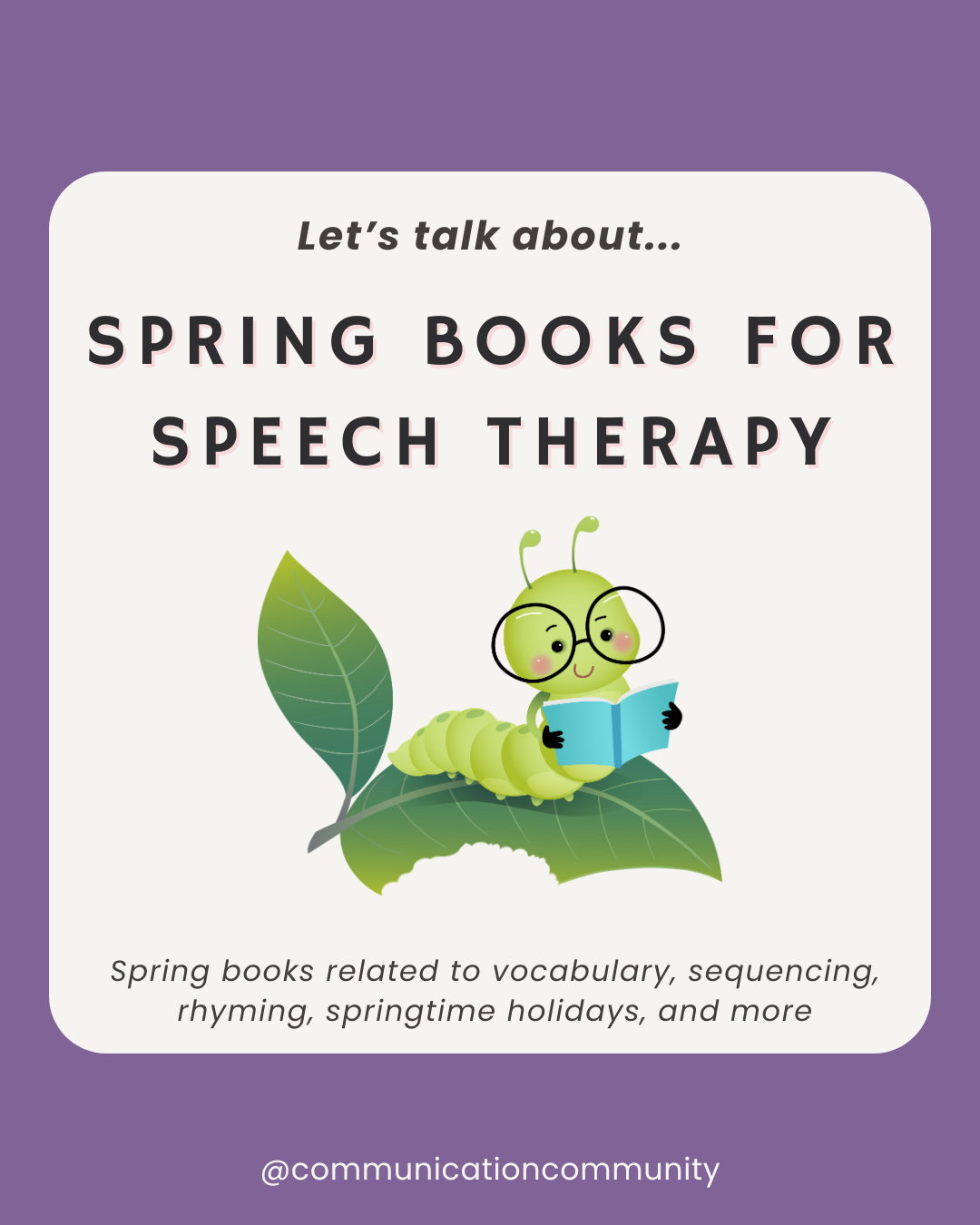What happens when the cute things your child says, like “ice keem” instead of “ice cream,” is no longer super cute, but rather make your child frustrated when others do not understand them? There are many reasons why they may be doing this - and one of these reasons is because they have a speech sound disorder, commonly known as an articulation and/or phonological disorder.
What is a Speech Sound Disorder?
A speech sound disorder is defined by ASHA as having difficulty producing speech sounds and segments. Speech sounds disorders may be organic or functional in nature. An organic speech sound disorder means that it is caused by a motor/neurological (e.g., dysarthria), sensory (e.g., hearing loss), or structural issue (e.g., cleft palate). A functional speech sound disorder means that there is no known cause for it. In this post, we will focus on functional speech sound disorders, which include articulation and phonology.
There are cases when an individual has a purely articulation OR phonological disorder, but it is not always possible to clearly differentiate one or another. For this reason, speech-language pathologists (SLPs) sometimes use the term speech sound disorder to encompass both of these factors.
Articulation Disorder vs Phonological Disorder
An articulation disorder is when there are speech sound errors like saying the “w” sound instead of the “r” sound, e.g. “wabbit” instead of “rabbit” (Hey, Bugs Bunny!) beyond the typical age of acquisition. Other examples of articulation disorders include leaving off a sound like saying “at” instead of “that,” or when a sound just doesn’t sound quite right, like it is distorted. In articulation disorders, speech sound errors are often consistent for certain sounds, like "s" or "t."
Common articulation errors are:
- Substitutions (saying one sound in place of another)
- Omissions (not saying a sound)
- Distortions (saying a sound kind of funky)
- Additions (inserting a sound)
A phonological disorder is when there are speech sound errors that are predictable and follow a pattern, known as a phonological process. An example of a “phonological process” is when an individual leaves off the last syllable of a word, no matter what sound is at the end of the word. They may say “bo” for boat, and “duh” for duck.
Articulation and Phonological Difficulties = Speech Sound Disorder
An individual may say “wabbit” instead of “rabbit” because they cannot articulate the sound “r,” OR, they may say “wabbit” instead of “rabbit” because they are showing the phonological process of gliding, which is when an individual says the “w” sound in place of the “r” sound, or the “y” sound instead of the “l” sound. Given formal and informal measures, an SLP may or may not be able to definitively distinguish whether or not it is an articulation difficulty or a phonological process that has not been eliminated. It is important to consider both articulation and phonology because treatment plans are based on if the difficulties are articulatory or phonological in nature.
An individual is diagnosed with an articulation, phonological, or speech sound disorder when they are unable to produce the sound or have not eliminated a phonological process at an age where it would be expected that they could. The acquisition and mastery of speech sounds is a developing skill for most children. For example, a two-year-old is not expected to correctly produce all speech sounds, but a ten-year-old would be. Likewise, young children who are developing speech and language use many phonological processes, but eventually, they stop using them. This is considered a normal part of speech and language development. When this does not happen and the individual is beyond the typical age of mastery, they may be diagnosed with an articulation, phonological, or speech sound disorder.
Speech Sound Disorders Treatment
Treatment: Articulation disorder
If an individual has definitely been diagnosed with an articulation disorder, treatment will be motor-based and focused on producing the target sounds correctly. There are many approaches to treatment and endless activities that focus on articulation, but most treatments involve saying the target sound at a certain level, in a certain position, and having the individual monitor how well they said it.
Level: individual saying the target sound in isolation, e.g. “r”, then moving on to saying it in words “red,” then phrases “red boat,” then sentences “I see a red boat,” then in multiple sentences or in a conversation.
Position: individual saying the target sound first at the beginning of the word, e.g. “red,” then at the end of the word, e.g. “car,” then in the middle of the word, e.g. “carry.”
Monitor: individual determines whether they said the target sound correctly or incorrectly, or whether someone else said the target sound correctly or incorrectly.
Treatment: Phonological disorder
If an individual has definitely been diagnosed with a phonological disorder, treatment will be more linguistically-based and focused on eliminating the phonological process. Rather than one sound being targeted, a few sounds may be targeted. This is because it has been determined that the speech sound errors are being made not due to motor error, but rather due to phonological process.
In phonological disorders, an individual may say the “t” sound (sound made in the front of the mouth) instead of the “k” sound (sound made in the back of the mouth), making “cookie” sound like “tootie.” They may also say “seet” instead of “sheet,” or “doh” instead of “go.” This is an example of the phonological process called fronting. Fronting is when a sound that should be made at the back of the mouth is replaced with a sound made closer to the front of the mouth. Treatment for fronting may focus on saying the “k” sound instead of “t” (cookie), and “g” sound instead of “d” (go), with the presumption that an individual will carry that skill over and start saying “sheet” instead of “seet.”
Treatment: Speech sound disorder
If an individual has been diagnosed with a speech sound disorder, treatment may combine aspects of articulation and phonological treatment approaches. For example, they may work on saying the “r” sound like red, river, road, but also incorporate activities that target the phonological process of gliding as well.
Articulation and Phonology Development Tables
Speech Sound Acquisition Chart (Articulation)
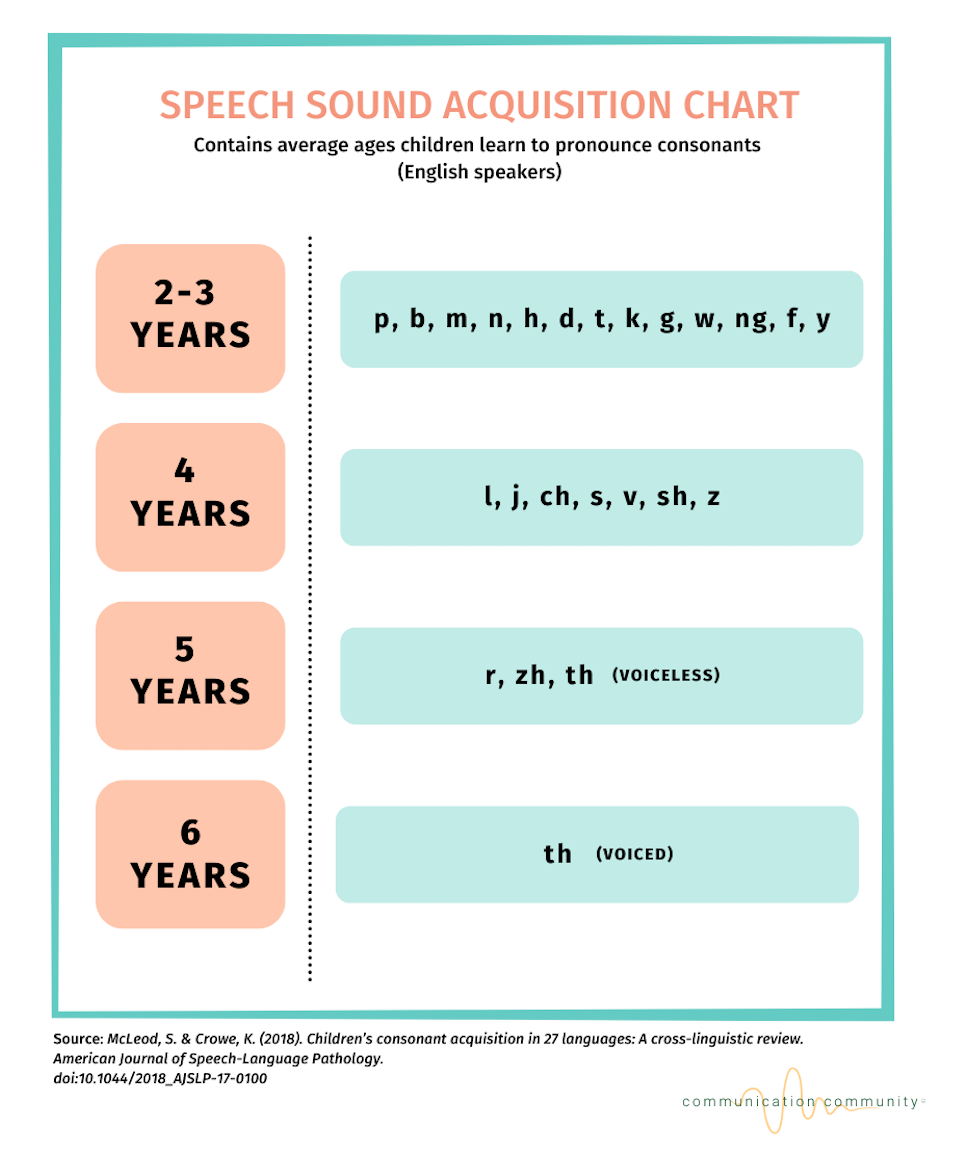
Disclaimer: While most research indicates that 90% of children will have mastered these sounds at this age, it is important to remember that this is not a be-all, end-all by any means. We have found credible sources for this information, but the downside of tables is that they are an attempt to be black and white in a world that can be very much grey.
Phonological Processes Development Chart
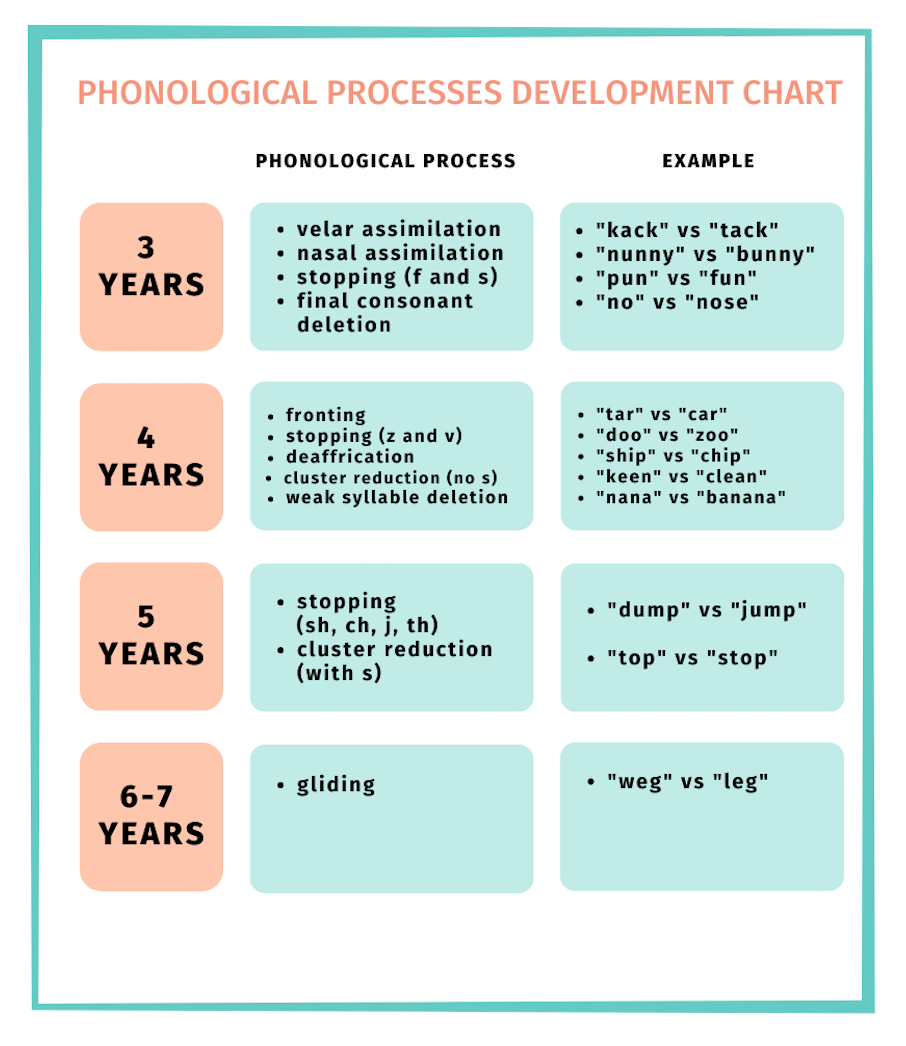
For a more complete list of phonological processes, check out this chart.
Disclaimer: age of elimination can vary widely among individuals. This is not a complete list of ALL phonological processes but is some of the most common ones seen among children.
Looking for more?
If you're looking for some resources to target articulation for specific sounds, we have many FREE Bingo boards available for download! Also, find them on our Teachers Pay Teachers store.
Want to get in touch?
Comments, questions, or anything else you'd like to share:
hello@communicationcommunity.com
Instagram: communicationcommunity
Facebook: communicationcommunityslp
Citations/further resources:
https://www.asha.org/Practice-Portal/Clinical-Topics/Articulation-and-Phonology/
https://www.asha.org/public/speech/disorders/Speech-Sound-Disorders/

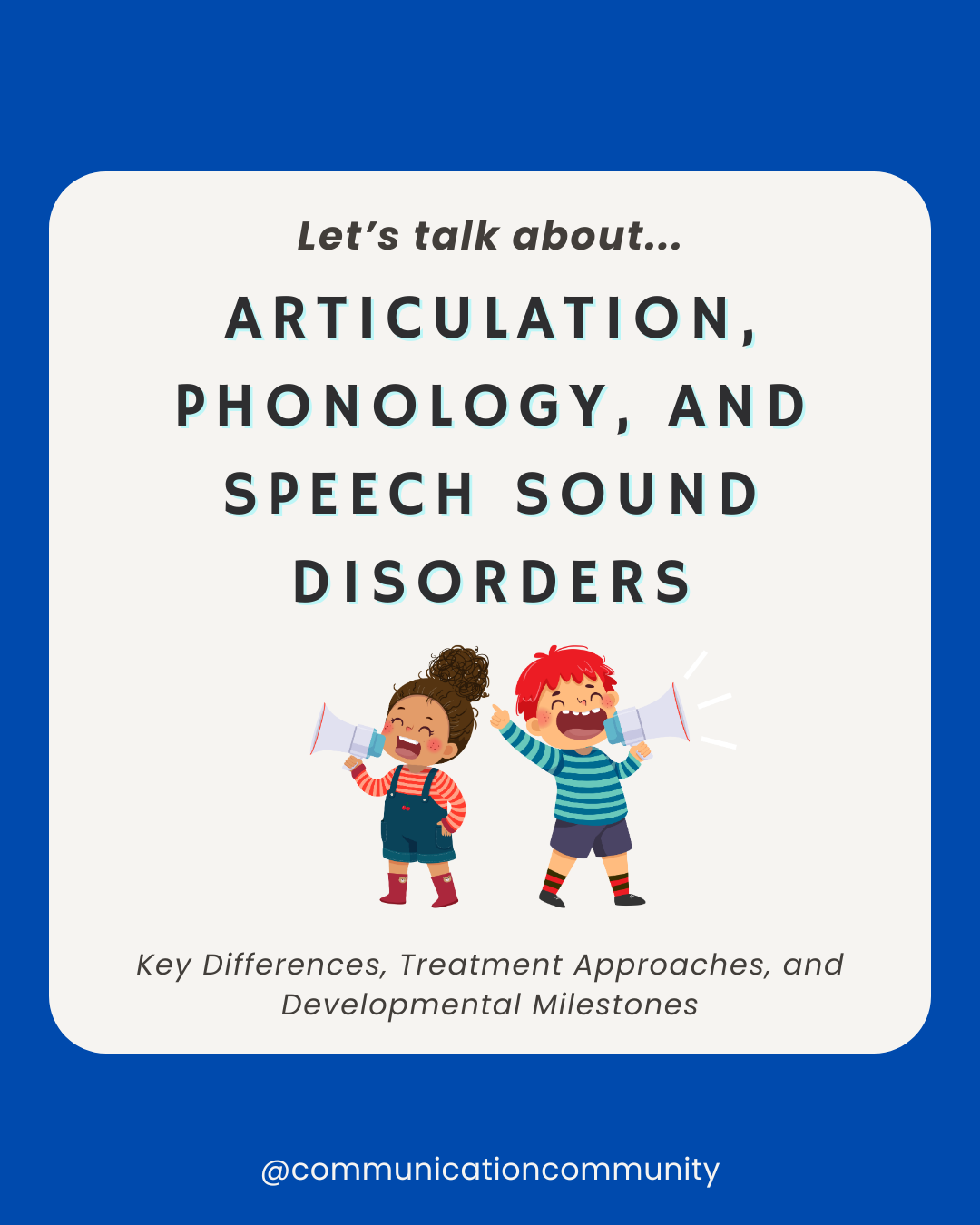
![How to Write Apraxia Goals [with goal bank]](https://www.communicationcommunity.com/content/images/2024/07/Apraxia-Goals--1-.png)
